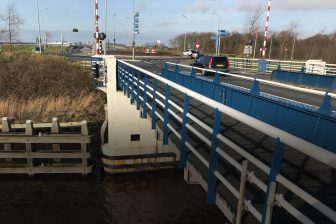WHO remembers road crash victims and their families
Countries offered guidance on factors with the greatest impact: helmets, seat-belts, drink-driving and speeding among others
Geneva, Switzerland -The World Day of Remembrance for Road Traffic Victims – the third Sunday of November each year – is a time to remember the many millions of people killed in road traffic crashes annually worldwide and draw attention to the devastating consequences of these deaths on families and communities.
"In a split second, a traffic crash transforms forever the life of a family. Behind each statistic, there are fathers and mothers, sons and daughters, brothers and sisters, grandchildren, colleagues, classmates and friends," notes Dr Etienne Krug, Director of the WHO Department of Injuries and Violence Prevention. "For every death or injury, there are scores of people who must cope with the physical, psychological or economic aftermath."
Survivors often endure the painful and at times long-term consequences of their injuries, including disability for which lengthy rehabilitation may be required. Relatives of victims and crash survivors can suffer depression and other mental health problems. In many low- and middle-income countries, the death of the primary breadwinner, funeral expenses, the cost of long-term care for the injured or the loss of income due to disability can drive a family into poverty. They all face lengthy administrative, judicial and legal matters.
Road crashes are the second leading cause of death globally among young people aged five to 29 and the third leading cause of death among people aged 30 to 44 years. Road crashes kill 1.2 million people every year and injure or disable as many as 50 million more. The economic impact is also significant. In low- and middle-income countries, the cost of road traffic injuries is estimated at US$ 65 billion, exceeding the total amount these countries receive in development assistance. Road traffic injuries cost countries between 1% and 2% of gross national product, amounting to US$ 518 billion every year.
Yet most road traffic crashes are preventable. There are many available and affordable interventions which can save lives and prevent injuries and disabilities. These include legislation, enforcement and sharing of information about the use of seat-belts, helmets, and child restraints and about the dangers of speed and drink-driving as well as improvements in road design and infrastructure and emergency trauma services. WHO, with partners from the United Nations Road Safety Collaboration, is working to prepare a series of manuals which address these factors and provide guidance to countries on how to design, implement and evaluate related policies and programmes.
The World Day of Remembrance was designated by the United Nations General Assembly in 2005 as a special day to acknowledge victims of road traffic crashes and their families. In adopting the resolution, the United Nations General Assembly also invited Member States to implement the recommendations of the World report on road traffic injury prevention, compiled by WHO and the World Bank, and to establish national lead agencies on road safety, along with action plans to reduce road traffic deaths and injuries.
Ms Brigitte Chaudhry, President of the European Federation of Road Traffic Victims, notes, "On behalf of the victims we represent, the European Federation of Road Traffic Victims and its member organizations greatly welcome the recognition by the United Nations of our remembrance day in November, which we believe will ensure that the profound impact of road traffic deaths and injuries will become better appreciated and the causes more urgently addressed."
A number of events are being planned by victims’ associations around the world to mark the World Day of Remembrance. These include:
- In Australia, the National Centre for Road Trauma Support in Canberra will hold a twilight candle light vigil on the shores of Lake Burley Griffin and the Road Trauma Support Team will place 346 pairs of shoes on the steps of Parliament House to represent the lives lost in 2005 on roads in the province of Victoria;
- In Luxembourg, paper boats with flowers will be floated on water, one paper boat representing each person killed or seriously injured in road traffic collisions. The Minister of Health will participate in this ceremony;
- In the Philippines, Project CARES will organize a ceremony, the highlight of which will be launch of a two-year school-based advocacy programme
- In the United Kingdom, 35 religious services will be held in places of worship throughout the country.
"It is our hope that just as the nations of the world stand together in painful awareness of this senseless loss of life, so will they strengthen their resolve to work together to implement those reforms which will bring an end to death and destruction on the world’s roads," states Mrs Rochelle Sobel, President of the Association for Safe International Road Travel.
U las zojuist één van de gratis premium artikelen
Onbeperkt lezen? Profiteer nu van de introductieaanbieding voor € 10,- per maand.
Bent u al abonnee?



